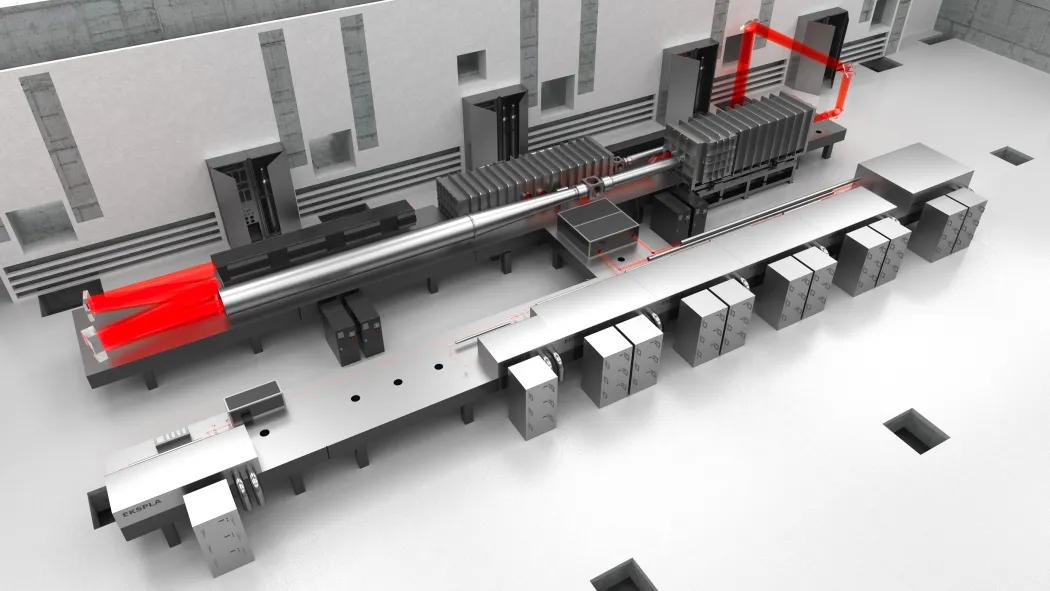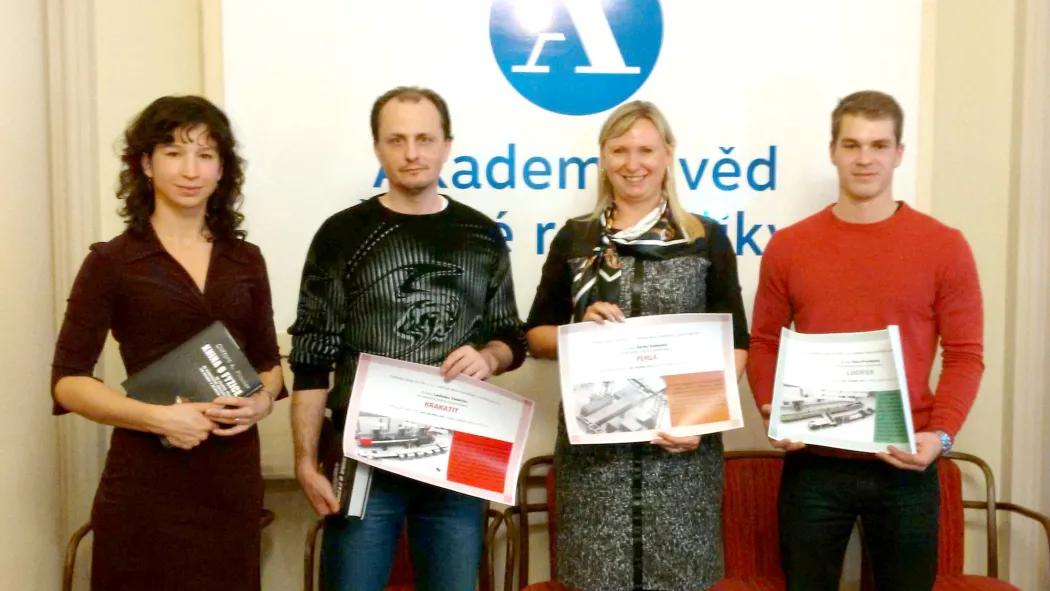The most powerful laser in history will be named KRAKATIT. A word coined in 1922 by Karel Čapek, a renown Czech writer, in his eponymous science-fiction novel is now – more than ninety years later – entering the world of big physics. The name was picked by a competitor in the “Find a Name for a Superlaser!” contest organised by the Institute of Physics of the Czech Academy of Sciences and the “Vesmír” (Universe) magazine.
KRAKATIT will have the power of 10 petawatts (PW) and after it is completed in 2018, it will become the most powerful laser in the world. It will be able to “shoot” just once per minute but its energy would suffice (if it was able to work without interruption) to bring the biggest Czech lake to a boiling point in 10 seconds and to completely evaporate all its water within 60 seconds. Using this laser, scientists will be able to create conditions under which they will be able to study processes occurring inside giant gaseous planets, such as Jupiter, Saturn, Uranus and Neptune in the Solar system.
The name “KRAKATIT” was picked by Ladislav Valerián from Pacov in the contest entitled “Find a Name for a Superlaser” (he sent five name proposal to the competition). The jury selected his proposal because the link between the most powerful laser in the world and Čapek‘s eponymous work also bears – apart from the reference to the enormous power (Krakatoa 1883 – the strongest volcanic eruption in modern history) – a reference to the importance of responsibility of mankind to use the findings of modern science with ethical considerations.
The ELI Beamlines laser centre situated in Dolní Břežany near Prague in which KRAKATIT will be operated after it is completed has also collected other names to be used for three powerful lasers. A name referring to Jan Ámos Komenský, renown Czech thinker, humanist and reformer of education was sent in by Marek Bryl from Nové Město pod Smrkem (M. Bryl sent two proposals to the competition). A laser named ÁMOS will serve primarily as a compact particle accelerator which will significantly contribute e.g. to the development of quality and cost-effective proton sources for the treatment of cancer.
A laser bearing the name LUCIFER will have a similar construction. Its name was proposed by Ivan Procházka from Plzeň (he sent in five proposals). The jury selected this name mainly considering its Latin meaning (lux = light, ferre = carry; Lucifer = the light bearer) which describes one of the main features of the laser – when it is completed, it will use the brightest laser diodes ever made in the world. Apart from this, LUCIFER should also cast some light on the search for new methods to save people‘s lives as ELI Beamlines will use it for the development of compact particle accelerators for medical applications and for the examination of inner structure of living cells; here LUCIFER (the light bearer) will also cast its light.
The last of the four lasers located at ELI Beamlines is named AVOJA; a name picked by a group of children participating in the final round of the last year‘s Space Expedition organised by the Institute of Physics and the “Vesmír” magazine.
The HiLASE – the second of the two laser centres of the Institute of Physics of the CAS situated in Dolní Břežany – will accommodate two lasers whose name was also picked in a public competition. The weaker but faster of the two (100 000 to a million of pulses per second) was named PERLA (Pearl), a name proposed by Šárka Kubicová from Karviná (she sent in two proposals). The name (PERfektní LAser) is to express the laser‘s ability to drill incomparably precise holes. If smartly applied, this capability will enable cars to have lower fuel consumption and racing cars to drive faster. PERLA will also improve the speed of computers as this laser can produce electrical connections which are thousand times thinner than a human hair. Contrary to its name however; PERLA will not be able to drill holes into pearls.
The last laser to receive its name in the contest is BIVOJ. As the name suggests (BIVOJ was a legendary character known for his enormous physical strength), it will be the most powerful laser at the facility. Its name was proposed by Darina Findová from Adamov (she sent in five proposals). BIVOJ‘s mission will be the completion of tasks as part of the development of new materials in fields such as the aviation industry. By a single “blow”, it will be able to fortify steel on a surface area as big as a hand watch by bringing the steel into a shock state resulting in a complete change of its properties, thus improving its durability. This will pose an advantage e.g. in aircraft construction, extending the plane‘s service life and making it much safer than today.
The contest took place from Oct 8th until November 23rd. The jury comprising Martina Boháčová (physicist), Barbora Hrzánová (actress), Roman Hvězda (manager), Michael Londesborough (chemist), Tomáš Mocek (physicist) and Ondřej Vrtiška (science journalist) evaluated 808 name proposals as sent in by the contestants.
The jury decided the names of the five competition lasers. On Feb 1st, 2016, the main prize – a multi-day stay in Geneva, Switzerland, for two persons, which included a visit to the world famous CERN scientific centre, was officially drawn. This main prize was won by Ladislav Valerián from Pacov.
The laser systems will be located in two specialised centres – HiLASE and ELI Beamlines constructed by the Institute of Physics in Dolní Břežany near Prague. They are an absolute top in their field, linking a number of scientific institutions at home and abroad for mutual cooperation. The construction of both centres is complete and they are being equipped with technologies.

